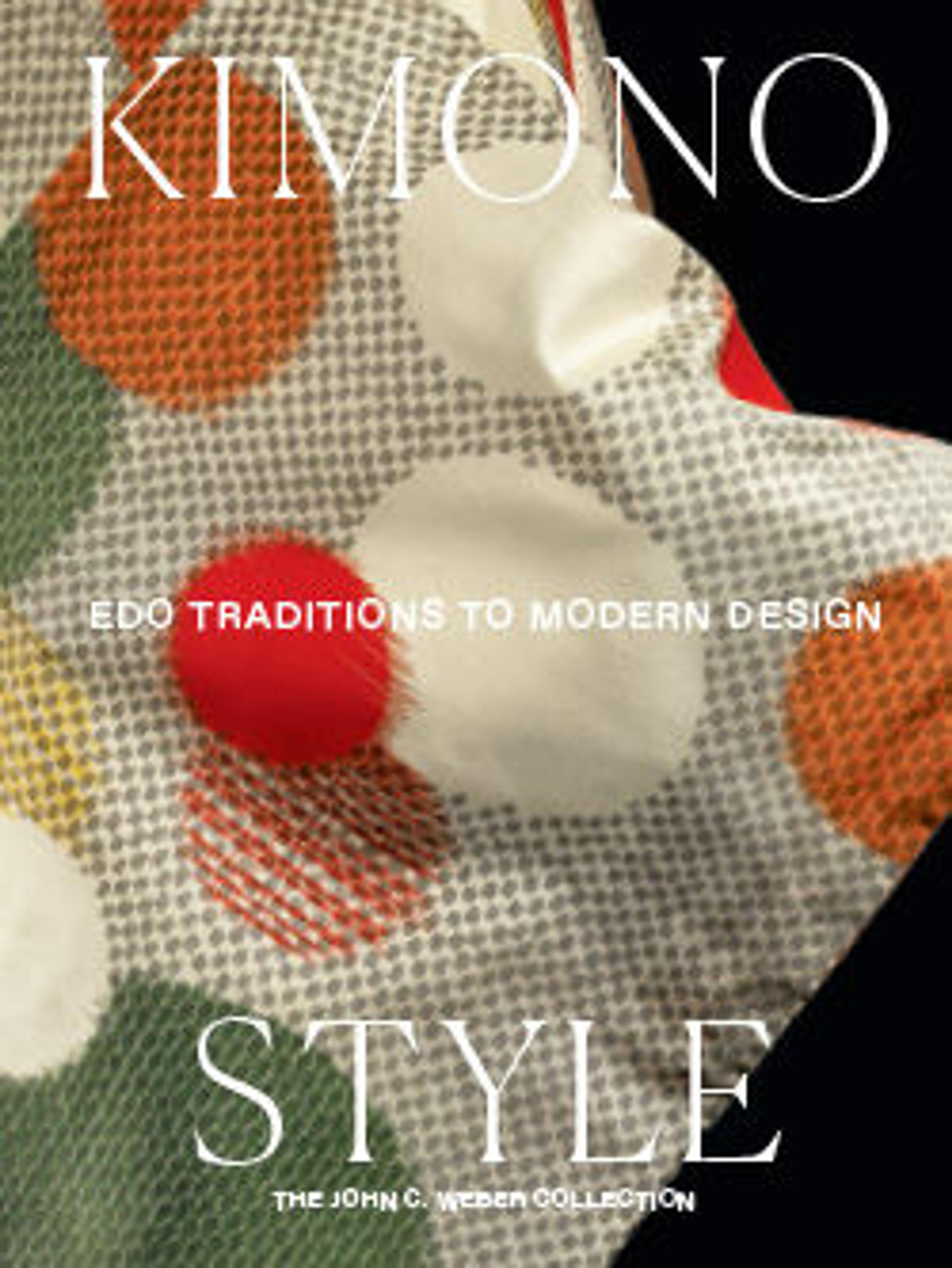Outer Robe (Uchikake) with Scenes of Filial Piety
In the second half of the Edo period, warrior-class women often wore robes with East Asian auspicious, literary, or didactic themes integrated into landscape designs. Embedded in the decoration of this robe—a winter landscape—are visual references to the fundamental Confucian tenet of filial piety, extolled in Japan as firmly as it had been in ancient Chinese society. One of the most famous collections of such stories advocating respect for one’s ancestors and parents is The Twenty-four Paragons of Filial Piety, based on a Yuan dynasty (1271–1368) text.
Among the twenty-four paragons represented here is Wang Xiang (Japanese: Ōshō), a third-century official who, to fulfill his ailing stepmother’s craving for fresh fish in midwinter, caught carp by lying on the ice of a lake until it melted. Wang is represented here by his clothing: an official’s cap and fan lie on the riverbank beneath a pine branch from which a court robe hangs. Another legendary figure, Meng Zong (Japanese: Mōsō), is evoked by the hat, straw cape, and hoe seen on the back of the right sleeve. When Meng’s ill mother expressed a desire for bamboo shoots out of season, he went to the snowy forest with his hoe, whereupon bamboo began to sprout to honor his filial conduct.
Among the twenty-four paragons represented here is Wang Xiang (Japanese: Ōshō), a third-century official who, to fulfill his ailing stepmother’s craving for fresh fish in midwinter, caught carp by lying on the ice of a lake until it melted. Wang is represented here by his clothing: an official’s cap and fan lie on the riverbank beneath a pine branch from which a court robe hangs. Another legendary figure, Meng Zong (Japanese: Mōsō), is evoked by the hat, straw cape, and hoe seen on the back of the right sleeve. When Meng’s ill mother expressed a desire for bamboo shoots out of season, he went to the snowy forest with his hoe, whereupon bamboo began to sprout to honor his filial conduct.
Artwork Details
- 鼠縮緬地風景二十四孝模様打掛
- Title:Outer Robe (Uchikake) with Scenes of Filial Piety
- Period:Edo period (1615–1868)
- Date:late 18th–early 19th century
- Culture:Japan
- Medium:Crepe silk with paste-resist dyeing and silk- and gold-thread embroidery
- Dimensions:Overall: 68 3/4 x 49 in. (174.6 x 124.5 cm)
- Classification:Costumes
- Credit Line:Anonymous Gift, 1949
- Object Number:49.32.109
- Curatorial Department: Asian Art
More Artwork
Research Resources
The Met provides unparalleled resources for research and welcomes an international community of students and scholars. The Met's Open Access API is where creators and researchers can connect to the The Met collection. Open Access data and public domain images are available for unrestricted commercial and noncommercial use without permission or fee.
To request images under copyright and other restrictions, please use this Image Request form.
Feedback
We continue to research and examine historical and cultural context for objects in The Met collection. If you have comments or questions about this object record, please contact us using the form below. The Museum looks forward to receiving your comments.
